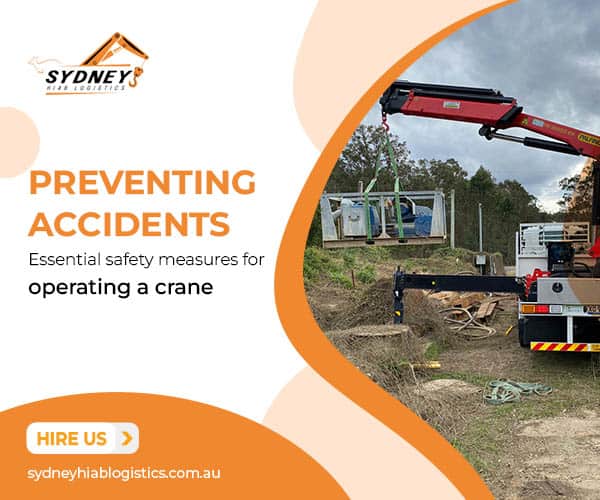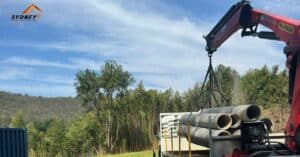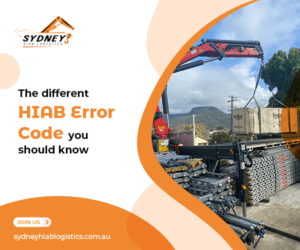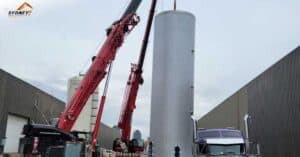Crane operation is a complex and potentially dangerous job that requires careful planning, proper training, and strict adherence to safety guidelines. Accidents can have devastating consequences due to cranes’ immense weight and height.
So, in this article, we will take you through some of the most common crane hazards and safety tips to prevent accidents while operating a crane truck.
What are the Most Common Crane Hazards?
- Electrical hazards
Overhead power lines are a significant hazard for crane operators and other workers on the job site. Crane booms and cables can quickly come into contact with power lines, causing electrocution and other serious injuries. Cranes often operate near power lines, which increases the risk of electrocution. If the crane comes into contact with a power line, the electricity can travel through the crane and harm the operator and anyone nearby. - Overloading
Overloading is one of the most common hazards associated with cranes. When a crane lifts a load beyond its capacity, it can cause the crane to tip over or collapse. It can lead to severe injuries or fatalities for the crane operator and the people nearby. - Improper Rigging
The rigging is the set of ropes, chains, and cables used to attach the load to the crane. If the rigging is not secured correctly, the load can become unstable and fall, causing injuries or fatalities. - Collision
Workers on the ground can be struck by loads being lifted by cranes if they are not properly secured or if the crane’s swing radius needs to be properly controlled. Collisions are a common hazard when operating cranes, especially in crowded job sites. If the crane collides with another object or person, it can cause serious injuries or fatalities. - Equipment failure
Like any mechanical equipment, cranes can experience equipment failure. Regular inspections and maintenance can prevent equipment failure and reduce the risk of accidents.
Crane Safety Tips
Selecting the Right Crane Truck
This is essential for ensuring crane safety during operation. Getting the right crane truck for your job can decrease the chances of preventing accidents. There are different types of Crane Truck available which is suitable for your industrial sites.
Different types of Crane Trucks available in Sydney are:
- Rough Terrain: Rough Terrain Crane Trucks are built with large industrial tires, mainly for limited space and off-road routes.
- All Terrain: All-Terrain Crane Trucks are for different types of terrain, including rough terrain, highways, mud paths, and other terrains.
- Truck Mounted: Truck-mounted trucks are mainly used for stationary jobs to lift lighter loads at shorter heights.
- Knuckle Boom: Knuckle Boom Crane trucks are manoeuvrable and can fold down to a smaller size.
Using the right crane truck helps us minimise the risk of any accident that might have occurred with the wrong crane truck.
- Proper Training and Certification
One of the most critical safety measures when operating a crane is ensuring the operator is properly trained and certified. Crane operators must complete a specialized training program that covers the proper use and maintenance of the crane and safety procedures.
The certification process includes written and practical exams, which must be passed before an operator can legally operate a crane. - Regular Maintenance and Inspections
Cranes must be regularly maintained and inspected to ensure they are in good working condition. Maintenance should include routine checks of the crane’s moving parts, electrical and hydraulic systems, and oil and fluid changes.
A qualified professional should conduct regular inspections to ensure the crane operates as it should. Inspections should be carried out regularly, including daily pre-use and monthly, quarterly, and annual inspections. - Proper Use of Personal Protective Equipment (PPE)
Personal protective equipment (PPE) is essential when operating a crane. PPE includes hard hats, safety glasses, gloves, and high-visibility clothing. - Rig the Load Correctly
Loading and unloading are critical parts of crane operation, and it is essential to follow proper procedures to prevent accidents. The load must be secured correctly and within the crane’s weight capacity.
A complete understanding of force, weight distribution, and rigging procedures is required to enable a safe, stable lift of even the most irregular and heavy loads. - Safe Operating Procedures
There are several safe operating procedures that operators must follow to prevent accidents. - These include:
- Using the crane only on a level surface
- Avoiding working near overhead power lines
- Operating the crane at a safe distance from other workers and objects
- Emergency Procedures
In an emergency, it is essential to have proper procedures in place to ensure that everyone is safe. The operator should be familiar with the crane’s emergency shut-off procedures and how to evacuate the crane safely if necessary. All personnel in the vicinity should be trained on what to do in an emergency, including where to go and who to contact. - Weather Considerations
Weather conditions can affect crane operation, and it is essential to consider the weather before operating a crane. Wind, rain, and snow can all impact the crane’s stability and ability to lift loads safely. The operator should be familiar with the crane’s maximum wind speed rating and avoid operating the crane in adverse weather conditions. - Communication
Effective communication is essential when operating a crane. The operator must communicate clearly with other workers to ensure everyone knows the crane’s movements and the load’s location. It includes using hand signals or a two-way radio to communicate with other workers on the job site.
Putting it Together
In conclusion, cranes are powerful tools that are essential for many industries. However, they can also be dangerous if not operated correctly. Implementing proper safety measures, such as training, regular maintenance and inspections, is essential to prevent accidents in industrial sites.
Contact us about anything related to crane/hiab truck hire or transportation and lifting services.





Your point of view caught my eye and was very interesting. Thanks. I have a question for you.
Thanks for sharing. I read many of your blog posts, cool, your blog is very good.
Your point of view caught my eye and was very interesting. Thanks. I have a question for you.
Your article helped me a lot, is there any more related content? Thanks!